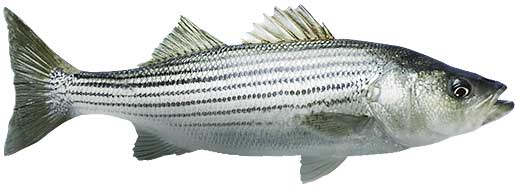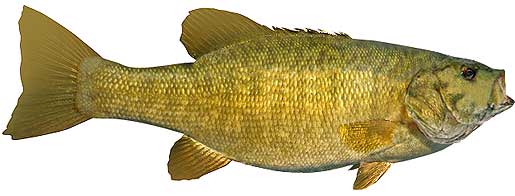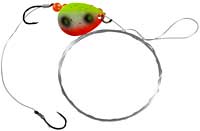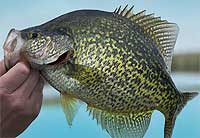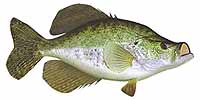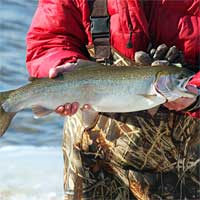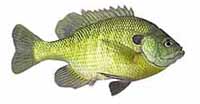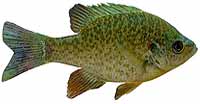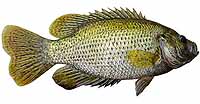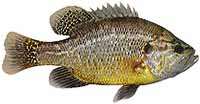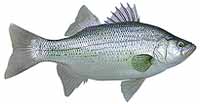Fishing Report For Norris Lake, TN
AKA: Norris Reservoir
By Rick Seaman
Last updated on .
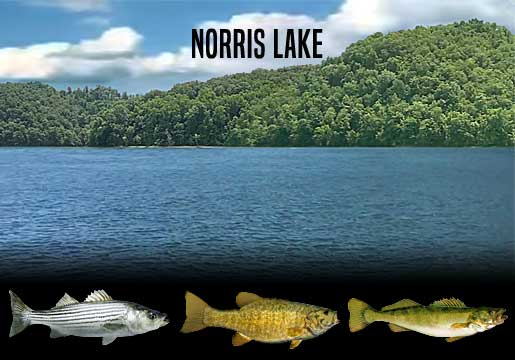
Fishing Reports
Popular Fish Species Norris Lake, TN
Striped Bass
Current Report: Good
FALL. In Fall, stripers return to shallower water. Early in the day stripers chase bait to the surface and feed aggressively, making this an excellent time for topwater action. Look for shallow water nearby deeper river channels, and fish them thoroughly. Most any lure that resembles shad will catch striped bass at this time of year. Menhaden, aka, bunker is reportedly a good choice for striper bait here, and available at tackle stores and marinas at the lake. After the spawn, being successful at fishing for stripers is a matter of locating schools of bait, and wolf packs of stripers are likely to be nearby. Fish finders are a big help in locating these roaming schools, usually in 15 to 35 feet of water. Swimbaits, jerkbaits, crankbaits, spoons, live bait and cut bait are all effective here.
WINTER. In Winter, stripers again hang out in deeper water and feed close to the bottom, often as deep as 80 feet. Warm, sunny afternoons occasionally draw stripers shallower, to around 25 or 60 feet deep as they feed on roaming schools of threadfin shad and gizzard shad. The main lake basin, along deep channels is holding schools of stripers, especially in the section of lake around the dam. Locate schools of bait, then look for stripers close by. Fish finders, and forward facing sonar, are a big help in locating these roaming schools. Nice stripers are caught while drift fishing with live bait or cut bait. Spoons, blade baits, and heavy hair jigs are also effective this time of year. Due to the stripers slower metabolism this time of year, anglers are triggering more strikes by working baits more slowly.
SPRING. The best striper fishing at Norris lake is April through June. Be aware of varying catch limits, for different seasons. Norris Lake is created by the inflow of the Clinch and Powell Rivers, and stripers migrate up these rivers during the spawn. Angers report catching striped bass occasionally, in the 30 to 40-pound range. Water temperatures are return to the mid 60's, and that's ideal for the stripers to spawn. In Spring, work the upper end of the lake, and the backs of coves, where there is inflowing water. If they spawn, this is where they will lay eggs in the moving water. They also move into transition zones on the main lake, in 15 to 35 feet of water, feeding on baitfish which are moving toward the shallows. Expect to locate them on mid-depth ledges, flats or points. The lake record is nearly 50 pounds.
SUMMER. Summer months are the ideal time to chase striped bass on Raystown Lake. In Summer, these stripers hang out in deeper water during the heat of the day, 50 to 60 feet deep, or deeper. Much of the time they are holding over deeper, open water. Morning often draws the stripers shallower, so look for them around the 20-foot range as they feed on roaming schools of baitfish. Being successful at fishing for stripers in Summer is a matter of locating schools of bait, and the wolf packs of stripers are likely to be nearby. Fish finders, and sonar electronics, are a big help in locating these roaming schools. Nice stripers are being caught while trolling or drift fishing. Spoons, blade baits, crankbaits, live bait and cut bait are all effective here.
Smallmouth Bass
Current Report: Good To Very Good
The Tennessee Wildlife Resources Agency has special limits for bass which currently limit anglers to 5 per day, and only 1 smallmouth bass June 1st through October 15th.
FALL. Norris Lake is widely-known a great smallmouth bass fishery, with the best fishing from early November to late April. As Fall arrives, smallmouth here follow schools of baitfish into coves and bays 5 to 20 feet deep. They thrive in the cold, clean water, which is an ideal environment for them. Reports by locals and tournament anglers indicate smallies are most often caught in relatively shallow water, especially early and late in the day. I like to fish a topwater bait or a mid-range crankbait when the bass are shallow searching for crawdads. Others report that tube jigs are a great choice when the bass are in 15' or shallower. Drop shot rigs with small worms or shad shaped plastics are also popular in 10' water or deeper. Jerkbaits, deep-diving crankbaits, and slow-rolled spinnerbaits, are also successful. Later in Fall, smallies move to slightly deeper water. Fishing shallow for smallmouth is often good on cold, windy, cloudy and rainy days.
WINTER. Winter will isolate them around deeper structure, points, flats and creek channels, often suspending in open water above these features. They can generally be found from 15 to 35 feet deep, based on available structure. Tube baits, jigging spoons, drop shots and Ned rigs often produce when fished with a very slow presentation. Here they hold, feeding less frequently, awaiting warmer water to return in Spring.
SPRING. After ice out, when water temperatures rise into the 50's, smallmouth move from deep wintering spots to shallower water, just outside spawning areas. They feed heavily in 3 to 12 feet of water at this time, and are typically caught on jerkbaits, crankbaits, tube baits, Ned rigs, and crayfish imitating plastics. Once water warms into the high 50's, they move into shallower water, and create nests in gravel or sand areas, then lay their eggs. Females then move to deeper water and males remain to guard the eggs, and then the fry. After a couple weeks, the males also move into 15 to 20 feet deep, and feed aggressively. Crankbaits, tube baits, Ned rigs, plastic worms, spoons and swimbaits are catching smallies during this period.
SUMMER. Smallmouth bass are currently feeding shallow early and late in the day in 8 to 12 feet of water. They are being caught on topwater, crankbaits, swimbaits, Ned rigs and tube baits. Smallmouth bass here feed on crawfish, gizzard shad, and small sunfish. They prefer rocky or gravel bottom areas, as this is where crayfish live. During the hotter parts of the day, they are being caught on points, humps, and ledges around 25 to 35 feet deep. Often these deeper fish are part of a large school of smallmouth.
Walleye
Current Report: Good To Very Good
Norris lake is stocked annually with Lake Erie strain walleye and Rockcastle Walleye, a river strain to help grow the already-healthy, natural population. Walleye fishing has been quite good as a result, for the last decade.
FALL. Fall brings cooler temperatures to shallow water, drawing walleye and baitfish shallower. The Tennessee WRA reports that minnow-tipped jigs, AC Shiners, Rapala Shad Rap, spinners tipped with minnows or with nightcrawlers, spoons, and live bait are all popular choices here. For trolling in deeper water, try deep-diving crankbaits. Early Fall finds them in 10 to 30 feet of water. Later in Fall, they move slightly deeper again. Dragging jigs or worm harnesses with nightcrawlers or leeches, or bottom bouncers, around ledge drop-offs catches walleye fairly consistently. Watch for the bigger walleye to be slightly deeper than the majority of the school.
WINTER. This Winter fishing for walleye was pretty good through the ice. Before, during and after the ice, anglers report catching them in 25 to 40 feet of water, along creek channel edges, rocky humps and ledges. They primarily feed on gizzard shad, threadfin shad and small fish, staying close to the bottom. Blade baits, jigs, swimbaits, spoons, deep-diving crankbaits, and worm harness spinners, are all working while deep trolling or slow drifting.
SPRING. Early Spring brings warming water in the shallows, and draws walleye here to feed, especially rocky areas and inlet channels. In Spring work deep points, drop offs, submerged structure, rock ledges, deeper flats and edges adjacent to deeper water. Here, in 5 to 25 feet deep, they will spawn once the water warms to the mid to high 40's. When they move shallow, bright colored jigs, tipped with minnows or nightcrawlers typically catch them. Spinnerbaits, jerkbaits and crankbaits are also working when walleye are up shallow. Afterwards, they move to 20 to 30 feet deep around points, flats, shoals and ledges, nearby shore, often staying in close proximity to their spawning locations.
SUMMER. Water temperatures rise in Summer, and walleye fishing is good if you can get your bait deep enough. Walleye tend to concentrate in 20 to 50 feet of water, or deeper, preferring the cooler temperatures. Throughout Summer, early in the morning, and from dusk to long after dark are good times to catch walleye. At those times they move slightly shallower to feed in low-light conditions. Night fishing is often good in Summer, as well. The rest of the time they are cruising flats and creek channel edges, where they are harder to locate. When the bite is slow, grubs and nightcrawlers, fished just off the bottom are catching walleye.
Fishing Video
Fish species to fish for...
Guide to fishing for largemouth bass, smallmouth bass, spotted bass, channel catfish, blue catfish, black crappie, white crappie, walleye, rainbow trout, brown trout, bluegill, redear sunfish, rock bass, warmouth, white bass, striped bass, muskie, paddlefish and sauger at Norris Lake in Tennessee.
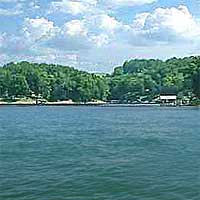 With a long-standing reputation for outstanding striped bass fishing, Norris Lake continues to deliver on that reputation. This 34,000-acre lake, with over 800 miles of shoreline, holds a multitude of stripers exceeding 50 pounds. Locals also report great smallmouth and walleye fishing, year round. Norris Lake is also home to bass, crappie, trout, white bass, muskie, sunfish, and several other species.
With a long-standing reputation for outstanding striped bass fishing, Norris Lake continues to deliver on that reputation. This 34,000-acre lake, with over 800 miles of shoreline, holds a multitude of stripers exceeding 50 pounds. Locals also report great smallmouth and walleye fishing, year round. Norris Lake is also home to bass, crappie, trout, white bass, muskie, sunfish, and several other species.
Primary fish species to catch
Click images for fishing tips and details about each species.
Today's Weather & Forecast
Fishing Boat Rentals
Click here for fishing boat rentals.
Marinas
Click here for marinas.
Public Boat Launch Ramps & Landings
Click here for boat ramps.
Fishing License
Click here for a Tennessee Fishing License.
Map - Fishing & Access
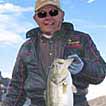 Rick Seaman is a fishing enthusiast with over five decades of fishing experience, a retired tournament fisherman, author of numerous published articles on fishing, and co-author of the book "Bass Fishing - It's not WHAT you throw, It's WHERE you throw it".
Rick Seaman is a fishing enthusiast with over five decades of fishing experience, a retired tournament fisherman, author of numerous published articles on fishing, and co-author of the book "Bass Fishing - It's not WHAT you throw, It's WHERE you throw it".
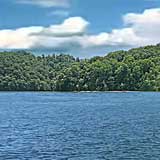 Contact Information
Contact Information
Norris Dam State Park
125 Village Green Circle
Rocky Top, Tennessee 37769
865 426-7461
Fishing lakes in each state
101325
Norris Reservoir Report
TENNESSEE


Exceptional striped bass fishing in northeast TN.


